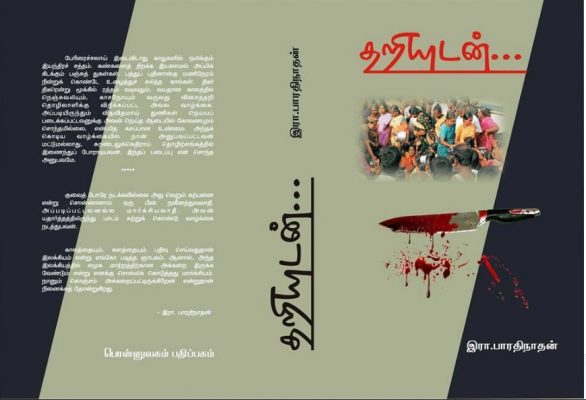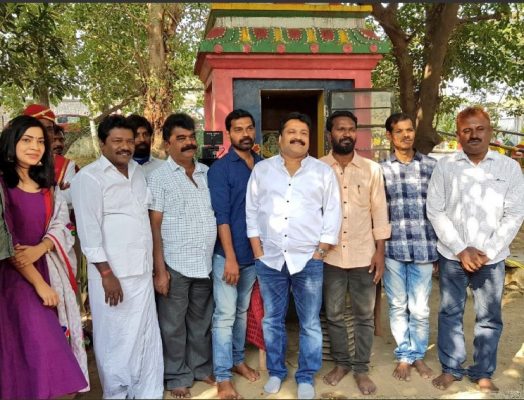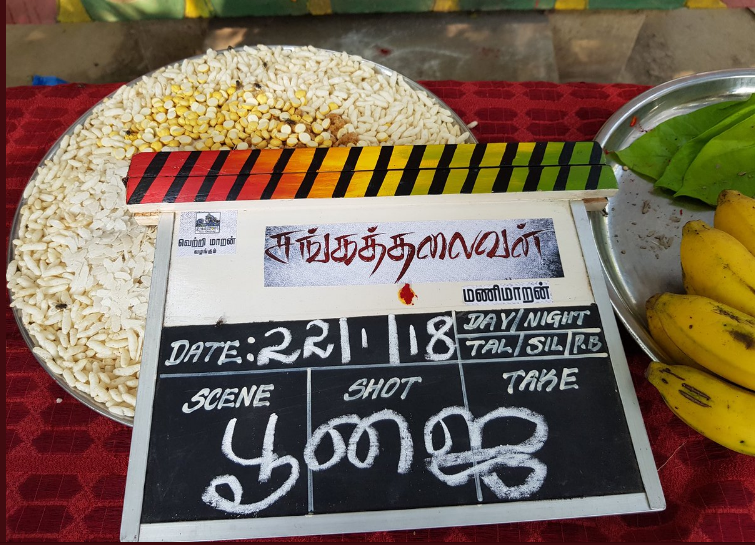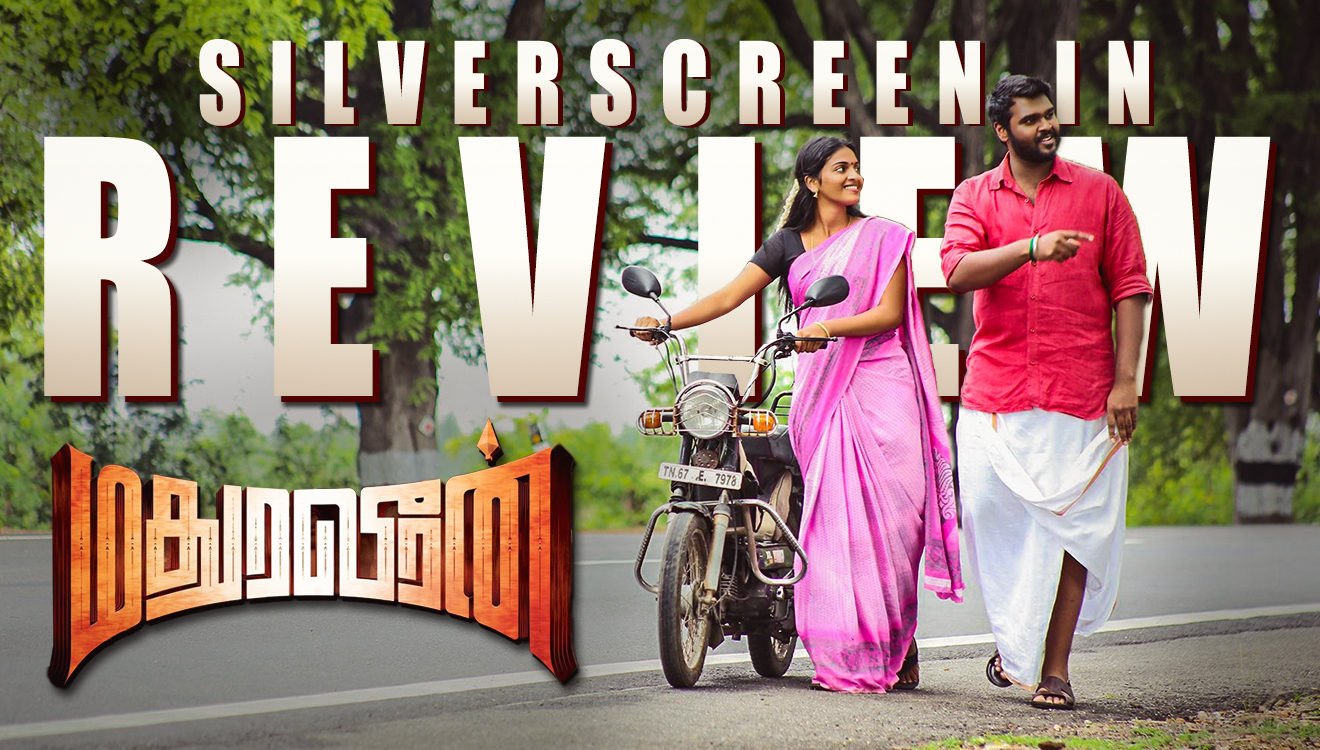Of the half a dozen books authored by writer Bharathinathan, ‘Thariyudan’, the novel that released in 2014 to much acclaim, is of special significance – not just because it’s being adapted for screen
For Tamil writer R Bharathinathan, author of six books, the tale of Vetrimaaran’s latest production – Sangathalaivan – would seem quite familiar. It may starkly mirror his life, and perhaps, overlap or merge with his own reality. That’s probably why, when I call him up one afternoon to talk about his book, ‘Thariyudan’, which had inspired Sangathalaivan, and which is largely drawn from his own life, he has trouble dissociating himself from its characters. Narrating the tale of Rangan, a worker in a textile factory in a small town off Salem, he switches between the first and the third person – not without considerable effort. Sometimes it’s ‘I’, sometimes, it’s ‘Rangan’. I interrupt him to clarify; the book is a work of fiction, though? “Well,” he says, “If everything is real, then it can only be a documentary – oru avanappadama thaan iruka mudiyum. I’ve added some twists in the tale towards the end; kaapiyil konjam sarkarai serkara maadri [like sweetening coffee].”
For the most part, ‘Thariyudan’ and Sangathalaivan tell the same story, with snatches of reality that the writer could bear to part with. “It’s about a man, a kozhai [coward], who, due to his irakka subhavam [kindness of heart], tries helping a woman in distress, and how the process changes him as a person – he gradually becomes a sanga thalaivan [the leader of an association],” says Bharathinathan.
*
Jalakandapuram, a panchayat town in Salem district, 32 kilometres from the city centre, sees a flourishing textile industry, especially that of sarees. Weaving – both handlooms and powerlooms – remains the main source of livelihood, as is dairy-farming. Bharathinathan traces his roots and much of his adult life to this place. While he has since relocated to Chennai, his sons are still engaged in the trade, visaithari [powerloom], back in Salem. It’s here, in this near-rural landscape, characterised by temple festivals, and a few local deities who inspire a massive following, that ‘Thariyudan’ [With The Loom] is based. While Bharathinathan reiterates that the tale belongs to Rangan – the journey of a thozhilaaali [worker] who becomes a poraali [warrior] – it begins with a woman called Rasathi who works in a powerloom factory. She injures her hand while at work on the loom, her limb is pulled into the machinery, and even as her life is saved, she tragically loses her hand. The owner of the mill, a government officer, buys the family’s silence by offering Rs 20,000 to her drunkard father.

Watching this whole episode from the sidelines is Rangan, the owner’s trusted aide. “He is not a warrior by nature; someone who hates confrontations,” narrates Bharathinathan, “But the plight of the woman moves him, so he approaches the Visaithari Thozhilalar Sangam [the workers’ union] about the woman.” Raasathi finally gets due compensation, but then, the owner gets to know about Rangan’s involvement and seeks revenge.
Bharathinathan’s account then acquires an almost cinematic quality. A young woman called Kalyani, from an economically disadvantaged background, sets out to warn Rangan of the owner’s motives. “She’s the owner’s niece and tells him all that transpires at their house. She is in love with him.”
My mother died when I was young, says Bharathinathan, suddenly switching to the first person. It’s a little disorienting to the ear: “I have a younger sister, and back then, I was working away from home…”
He soon helps himself back though, easing back into the role of a distant narrator; only a few subtle vocal inflections, some sudden turns in voice aid in bridging the chasm between fiction and reality.
“Rangan soon has a false case foisted on him, is disowned by his father, and is taken under the wing of the union leader Sivalingam and his wife Velayyi, who ministers care.” The Sangam follows the Marxist ideology, informs Bharathinathan, but isn’t linked to any of the existing CPI or CPI (M) parties. “When Sivalingam is jailed under the Goondas Act of 1982, Rangan becomes the thalaivar [leader]. This is the crux of the story. There’s romance, and an almost fraternal relationship between Rangan and Raasathi, adhu oru aathmarthamana uravu [it’s something deep, heartfelt].”
*
While Priyadarshan’s Kanchivaram (2008) and Vasanthabalan’s Angadi Theru (2010) had explored the lives of workers in the textile industry – the former following the travails of a silk weaver, the latter detailing the near miserable lives led by two sales people – Bharathinathan declares that “it’s still something new to the world of cinema.” Director Manimaran already had a story in hand, “and I helped iron out some knots …sila sikkalgal. I understand screenplay well for I have some experience. I helped write the screenplay for the serial Romapuri Pandian which was aired on Kalaignar TV.”

Director Manimaran, who is adapting the novel to screen, is almost cautious when we speak. “I can’t tell you much,” he says, from the sets of Sangathalaivan in Chennai, “Vetrimaaran handed me the book as I like reading about socio-political issues. The film revolves around the lives of the textile mill workers; they want a raise and go on a strike. The women workers are made to work more than the stipulated eight hours, they don’t have proper sanitation facilities, too. The one who questions their working conditions is Samuthirakani – the head of the worker’s union – while Karunas is someone who approaches the union with a cause.”
Karunas plays Rangan, while Sunulakshmi (of Aramm fame) plays Kalyani. VJ Ramya essays the role of Velayyi. “She [Velayyi] is a great character,” Bharathinathan enthuses, “a typical rural woman. When I was disowned by my family, she took me under her wing, and cared for me like a sister. She’s hard on the outside; kanavana kadumaya thittuvanga [she would yell at her husband], but is loving at heart. She’s still alive. In fact, almost all important characters you would see in the movie, and who are a part of the tale, are living.”
Debutante Divya – an actress from Trichy – plays the role of Raasathi. “I am not a cinemakaaran,” says Bharathinathan, “I didn’t want to meet the team, but I wanted to talk to Divya about Raasathi. She grasped the character well.”
Raasathi is alive and well too, he says, “We still share a lovely bond; I helped organise her wedding…”
*
Kalyani and Rangan don’t marry, declares Bharathinathan almost impassively when I ask after her, “We couldn’t marry; her uncle intervened and got her married to someone else.” He turns a little brusque then, grappling with the idea of pursuing a strand of reality that may perhaps be a little too revealing, and refuses to answer questions about his family.
Recommended
He can talk more about his work, though – and somewhat hesitantly mentions two others books of his that have also caught the interest of filmmakers. ‘Vandherigal’, his second novel, is based in Nagari, Andhra Pradesh. “The workers in Jalakandapuram, after getting a loan from the mill owners would flee to Nagari unable to repay it,” he says, deconstructing the premise, “if you walk down the streets of Nagari, people there would ask you if you are a visaithari thozhilali… one such worker is Chandru, who meets a wonderful woman called Saritha. She’s a sex worker, and a romance blossoms between the two…”
His third book, ‘Aakkati’, too, may be adapted for screen. “It’s too early to discuss that,” says Bharathinathan, “I’m still in talks with producers and directors…”
Sangathalaivan is currently being filmed in Chennai. The team will later move to Salem for the next schedule. Bobo Shashi of Kulir 100 Degree fame composes music as Manimaran directs. Vetrimaaran produces the project under his Grassroot Film Company.
Featured image: VJ Ramya/Twitter
*****
The R Bharathinathan interview is a Silverscreen exclusive.



